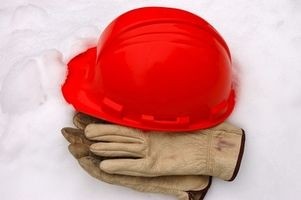Hottest Topics In Manufacturing Safety

The Occupational Safety and Health Administration (OSHA) regulates safety in the United States, including manufacturing workers' safety. The organization is dedicated to helping prevent accidents and injuries in every workplace. Many best practices for manufacturing safety remain the same from year to year. In addition to monitoring compliance with those best practices, OSHA also monitors hot topics in manufacturing safety.
AEDs
• Automated external defibrillators (AEDs) are portable devices that deliver a shock to the heart. OSHA reports that AEDs save lives. Fewer than 5 percent of people who suffer a sudden cardiac arrest survive without AED, while post-AED survival rates are 70 percent. OSHA recommends installing AEDs in manufacturing facilities and some states now require AEDs in the workplace.
Ergonomics
• Ergonomics refers to risk factors in the workplace that could cause muscle, joint, and bone injuries and related illnesses. Some ergonomic risk factors are repetitive, prolonged hand motions, prolonged awkward postures and frequent, heavy lifting. Cold temperatures and vibration increase the risk of injury. An ergonomics assessment can help identify configurations and processes that are ergonomically satisfactory and flag those that could cause trouble.
GHGs
Environmental topics have never been hotter, and greenhouse gas emissions (GHGs) are getting new attention from the Environmental Protection Agency (EPA). The EPA now offers guidance to help local government workers who issue air emissions permits identify ways to reduce GHGs. The best available technology for controlling the gases varies for each situation, but the EPA's guidance suggests energy efficiency remains the most cost-effective way to reduce GHGs in most cases.
AEDs
• Automated external defibrillators (AEDs) are portable devices that deliver a shock to the heart. OSHA reports that AEDs save lives. Fewer than 5 percent of people who suffer a sudden cardiac arrest survive without AED, while post-AED survival rates are 70 percent. OSHA recommends installing AEDs in manufacturing facilities and some states now require AEDs in the workplace.
Ergonomics
• Ergonomics refers to risk factors in the workplace that could cause muscle, joint, and bone injuries and related illnesses. Some ergonomic risk factors are repetitive, prolonged hand motions, prolonged awkward postures and frequent, heavy lifting. Cold temperatures and vibration increase the risk of injury. An ergonomics assessment can help identify configurations and processes that are ergonomically satisfactory and flag those that could cause trouble.
GHGs
Environmental topics have never been hotter, and greenhouse gas emissions (GHGs) are getting new attention from the Environmental Protection Agency (EPA). The EPA now offers guidance to help local government workers who issue air emissions permits identify ways to reduce GHGs. The best available technology for controlling the gases varies for each situation, but the EPA's guidance suggests energy efficiency remains the most cost-effective way to reduce GHGs in most cases.
- 80fcca5cc9f1c0fe6abb16f99acf8601fb.jpg